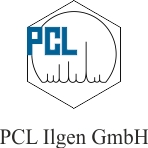Oil Test
Electrical, physical and chemical characteristics
Insulating oil on mineral oil basis is the most frequently used liquid insulating and coolant in liquid-filled electrical equipment. Good low-temperature characteristics, high flash point, compatibility with other transformer material, excellent dielectric characteristics in combination with cellulose insulating material and good price-performance ratio are the reasons why it is the most frequently used insulating liquid in electrical equipment. The condition of the oil-filling is responsible for the operational reliability of the transformer. Therefore, it should regularly be controlled. On the basis of these testing results further examinations, and services if necessary, can be planned in time.
PCL offers an extensive routine test. It grants a more complete assessment of the operational reliability of the oil filling in regard of its electrical, physical and chemical characteristics.
Water Content
The water content is determined according to IEC 60814 (Karl-Fischer-Method). The water determination is very sensitive to external influences. Thus, it has to be realised immediately after opening the sample tank. Otherwise atmospheric humidity may be absorbed from the oil sample. By means of the water content determination in oil the humidity content of the solid insulation can be estimated [1].
Breakdown Voltage
The breakdown voltage is a measure for the electric resistance of the insulating oil. It is realised according to IEC 60156. Water and the particle content are the essential parameters of the breakdown voltage of an insulating oil. If the breakdown voltage does not comply with the minimum requirements any longer (depending on the transformer surface voltage) and is significantly registered below the water content of the supposed value [2], finely in oil dispersed particles are likely to be the reason. Particles can be imported in the transformer along with service activities or may occur with production garbage. They can also be produced by oil ageing during the operation phase (sludge formation) or can be emitted by paper insulation ageing to the insulating oil (break of cellulose fibres). Normally the latter is only the case of advanced solid insulation decomposition. The degree of thermal decomposition of solid insulation can only be controlled by determining the furfural content of the insulating oil.
Dielectric Dissipation Factor tan delta (90°C)
The dielectric dissipation factor is a sign for the extent of the electric dissipation in the oil/cellulose dielectric during the operation. These dissipations can contribute to an additional temperature rise and thus to an accelerated thermal ageing. If the worst comes to the worst an unacceptably high dissipation factor of the paper/oil dielectric can cause a heat shock and a thermal discharge disruptive discharge. Tan delta sensibly reacts to pollution and oil oxidation products. Therefore, a decrease of the dielectric dissipation factor can be observed after the release of oil sludge (solid oil ageing products).
Acidity
The acidity of oil is a measure for acid oxidation products dissolved in oil (carbon acids), which are produced by carbon hydrogen ageing under the influence of oxygen from air, temperature and metallic catalysts. Therefore, it is an indication for the ageing condition of the oil filling. The acid portions attack metallic surfaces (contacts) with corrosion and water catalyses the reduction of solid insulation [3]. With the portion of these and other polar components in oil (alcohol, aldehyde and cetones, preliminary stage of carbon acids) the water susceptibility of the insulating oil increases. The acidity is determined according to IEC 62021 part 1 and defines the alkali quantity (KOH) in mg/kg which is necessary for neutralising the existing acid portions in 1 gram of oil.
Purity
Insulating oil can be polluted by dirt, carbon black and oil sludge. Dirt particles, enamel and cellulose fibres can be caused by production faults or sometimes even by not precise sampling. Carbon black is often detected in oil from load transformer switch and acute electric faults. Oil sludge is produced finely disseminated in insulating oil due to advanced ageing. Over the years it deposits itself. If this happens in the cooling-air duct of the windings, a heat accumulation and even a thermal breakdown may occur. Since the solubility of high-molecular oil ageing products (sludge) in insulating oil decreases with lower temperatures, primarily at cool spots, e.g. the transformer fins, sledge deposits are formed. If it comes worst to the worst, this may lead to a significant reduction of the cooler efficiency.
The sludge content is qualitatively determined in a visual way and with filtration of an oil sample rest. If desired the determination can also focus on the quantity. If the release of oil sludge has just begun, the extent of the necessary service work (oil change, cleaning and drying of the active part...) cannot be subsidiary, not to mention the expected transformer’s breakdown time in this case. Nevertheless, the consequent observation of the dielectric dissipation factor tan delta (90°C) and the neutralisation value as well as the control of colour, purity and odour can grant a sign for the expected sledge formation. With the appropriate signs an oil sample should be tested in regard of precipitable sledge in n-heptane. This way a change of the insulating oil’s polarity is caused, and thus the early precipitating of the oxidation product probably existing in oil is forced. If the test is positive the formation of oil sledge is likely in the nearby future. So, necessary service work can be planned more efficiently
Colour and Odour
The testing of the oil sample in regard of colour and odour completes the examination result of the insulating oil sample.
Oil Filling Assesment
After having finished the routine examination according IEC 60422 the condition of the oil filling is assessed by means of the existing results and, if necessary, further measurements are recommended.
- ReferencesPiper J.D, AIEE Transactions 65, pp. 791-797 (1946)
- VDEW-Ölbuch, Band 2, p. 82, 7. Ausgabe 1996, VWEW-Verlag Frankfurt
- Vergne J. et al., REE, (2) 1995, pp. 75-83


